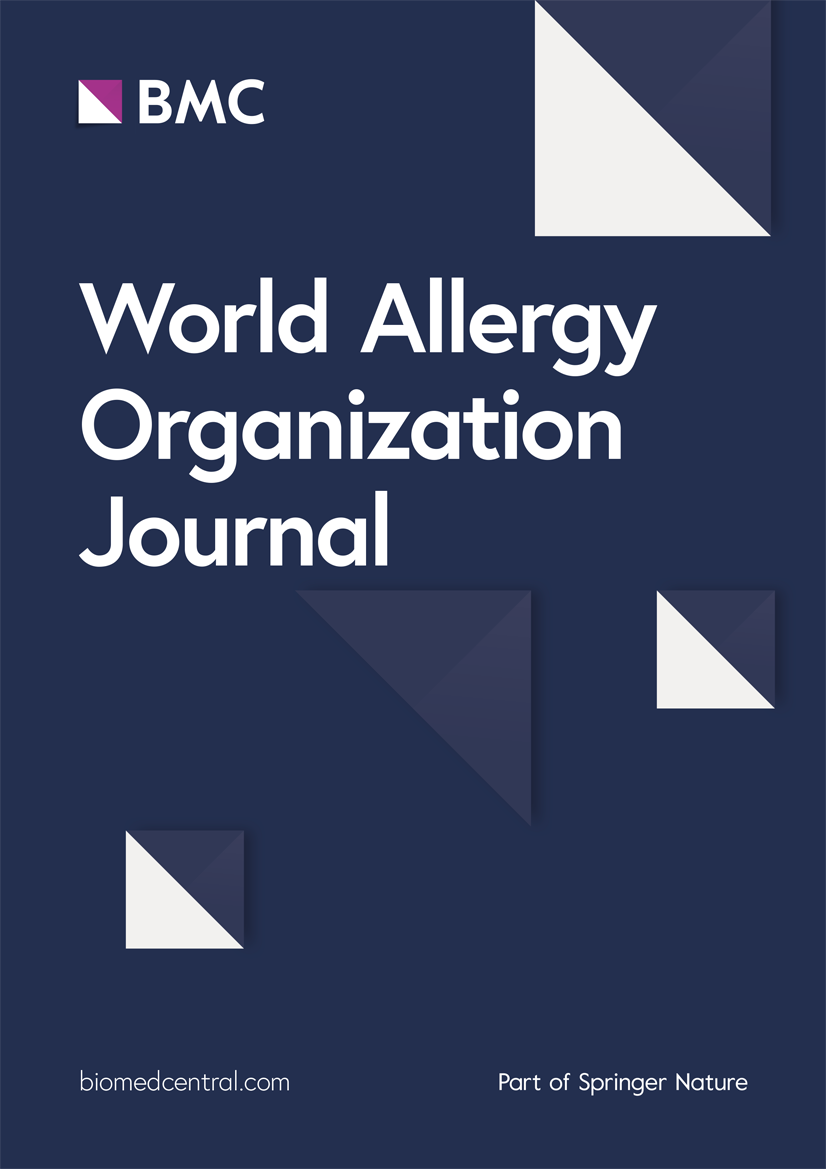Evaluation of the awareness of pediatric residents of anaphylaxis diagnosis through clinical scenarios
IF 4.3
2区 医学
Q2 ALLERGY
引用次数: 0
Abstract
Introduction
Anaphylaxis is an acute onset, life-threatening systemic hypersensitivity reaction requiring urgent medical intervention. Early recognition and appropriate treatment of anaphylaxis are crucial for patient survival. This study aims to assess the awareness of pediatric residents regarding the diagnostic criteria, differential diagnosis, and appropriate treatment approaches for anaphylaxis.
Materials and methods
Active pediatric residents volunteering in participating in the study were included. Participants were given a questionnaire consisting of 10 clinical scenarios assessing diagnostic criteria and 15 questions evaluating professional experience and knowledge.
Results
A total of 198 pediatric residents were included in the study. The average clinical working experience of the participants was 18 months. On average, participants answered 7.3 out of 10 clinical scenario questions correctly (min-max: 3–10). In the clinical scenario describing a 2-year-old patient with a history of anaphylaxis to milk-based formula, the patient developed coughing and wheezing after entering the kitchen while the mother was boiling milk. The patient had a respiratory rate of 52/min, SpO2 of 90%, and bilateral wheezing. This case, which involved no ingestion and presented only with signs of bronchospasm, was the scenario that participants found most challenging. While 64.1% of the participants classified it as anaphylaxis, 35.9% identified that the clinical presentation did not meet the diagnostic criteria for anaphylaxis. Similarly, the scenario involving a 17-year-old patient with acute rheumatic fever who developed syncope 5 min after receiving a benzathine penicillin injection and presented with confusion, heart rate of 58 bpm, blood pressure of 80/50 mmHg, respiratory rate of 38 breaths/min, SpO2 of 95%, and sinus bradycardia on ECG, was the least correctly identified as vasovagal syncope in terms of a differential diagnosis of anaphylaxis (33.8%). The results indicated that pediatric residents were less successful in diagnosing anaphylaxis in cases without skin/mucosal involvement and in drug/venom-related anaphylaxis cases. When both scenario-based and knowledge-based questions were considered, residents in their final 2 years and those who had received specialist training demonstrated significantly higher overall correct response rates (p < 0.001, p = 0.002). Epinephrine was selected as the first-line treatment in 99.5% of cases; 81.3% of participants correctly identified the dosage, 97.5% the route of administration, and 89.4% the site of administration.
Conclusion
In our country, the emergency treatment and follow-up of pediatric patients experiencing anaphylaxis are mostly carried out by pediatric specialists. Therefore, the education and training on the diagnosis and emergency management of anaphylaxis, a pediatric emergency, hold significant importance during the pediatric residency training period.
通过临床情景评价儿科住院医师对过敏反应诊断的认识
过敏反应是一种急性发作,危及生命的全身性过敏反应,需要紧急医疗干预。早期识别和适当治疗过敏反应对患者的生存至关重要。本研究旨在评估儿科住院医师对过敏反应的诊断标准、鉴别诊断和适当治疗方法的认识。材料与方法纳入自愿参与本研究的活跃儿科住院医师。参与者填写了一份问卷,包括评估诊断标准的10个临床场景和评估专业经验和知识的15个问题。结果共纳入198名儿科住院医师。参与者的平均临床工作经验为18个月。平均而言,参与者正确回答了10个临床场景问题中的7.3个(最小-最大:3-10)。在临床场景中,描述了一名2岁的患者,对基于牛奶的配方奶粉有过敏史,患者在母亲煮牛奶时进入厨房后出现咳嗽和喘息。患者呼吸频率52次/分,SpO2 90%,双侧喘息。这种情况下,没有摄入,只有支气管痉挛的迹象,是参与者发现最具挑战性的场景。64.1%的参与者将其归类为过敏反应,35.9%的参与者认为临床表现不符合过敏反应的诊断标准。同样,一名17岁的急性风湿热患者在接受苄星青霉素注射5分钟后出现晕厥,表现为精神错乱,心率为58 bpm,血压为80/50 mmHg,呼吸频率为38次/分钟,SpO2为95%,心电图显示窦性心动过缓,在过敏反应的鉴别诊断中,这种情况被诊断为血管迷走神经性晕厥的准确率最低(33.8%)。结果表明,儿科住院医师在没有皮肤/粘膜受累的病例和药物/毒液相关的过敏反应病例中诊断过敏反应的成功率较低。当考虑基于场景和基于知识的问题时,最后2年的住院医生和接受过专业培训的住院医生表现出明显更高的总体正确率(p <;0.001, p = 0.002)。99.5%的病例选择肾上腺素作为一线治疗;81.3%的参与者正确识别剂量,97.5%的参与者正确识别给药途径,89.4%的参与者正确识别给药部位。结论在我国,儿童过敏反应的急诊和随访多由儿科专科医生进行。因此,在儿科住院医师培训期间,对过敏反应这一儿科急症的诊断和急救管理进行教育和培训具有重要意义。
本文章由计算机程序翻译,如有差异,请以英文原文为准。
求助全文
约1分钟内获得全文
求助全文
来源期刊

World Allergy Organization Journal
Immunology and Microbiology-Immunology
CiteScore
9.10
自引率
5.90%
发文量
91
审稿时长
9 weeks
期刊介绍:
The official pubication of the World Allergy Organization, the World Allergy Organization Journal (WAOjournal) publishes original mechanistic, translational, and clinical research on the topics of allergy, asthma, anaphylaxis, and clincial immunology, as well as reviews, guidelines, and position papers that contribute to the improvement of patient care. WAOjournal publishes research on the growth of allergy prevalence within the scope of single countries, country comparisons, and practical global issues and regulations, or threats to the allergy specialty. The Journal invites the submissions of all authors interested in publishing on current global problems in allergy, asthma, anaphylaxis, and immunology. Of particular interest are the immunological consequences of climate change and the subsequent systematic transformations in food habits and their consequences for the allergy/immunology discipline.
 求助内容:
求助内容: 应助结果提醒方式:
应助结果提醒方式:


